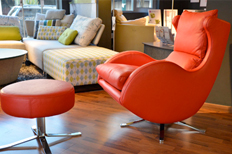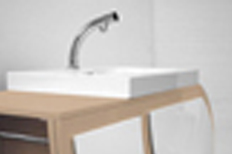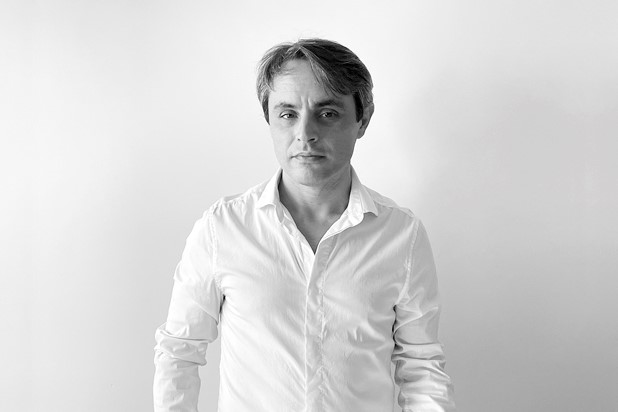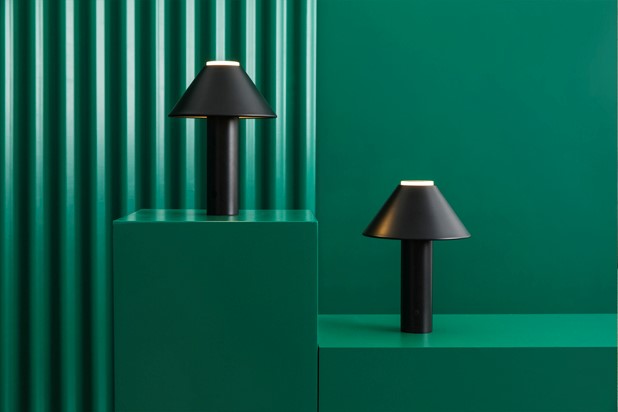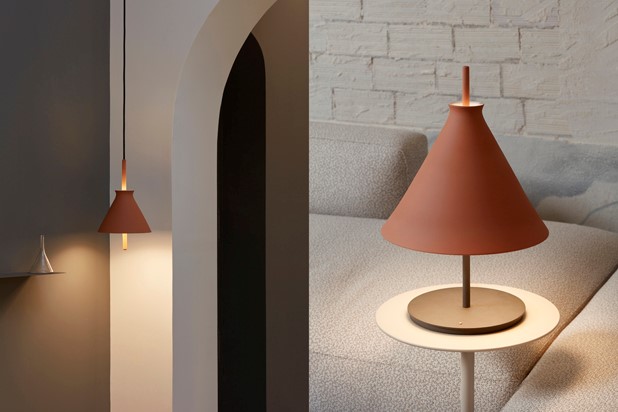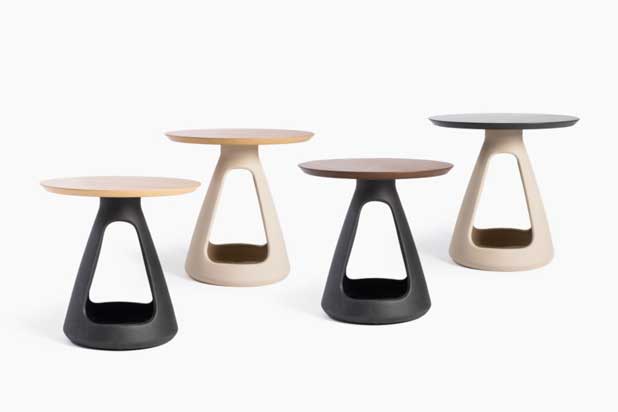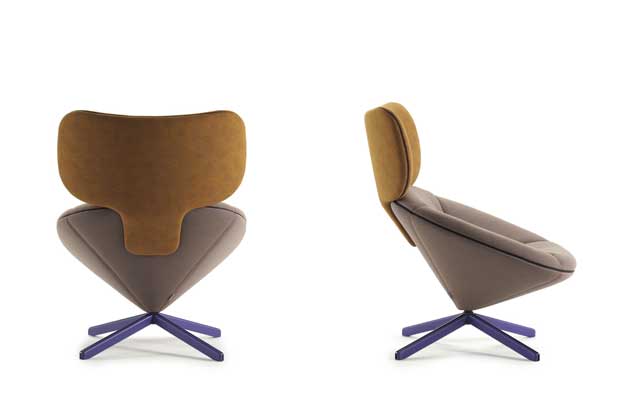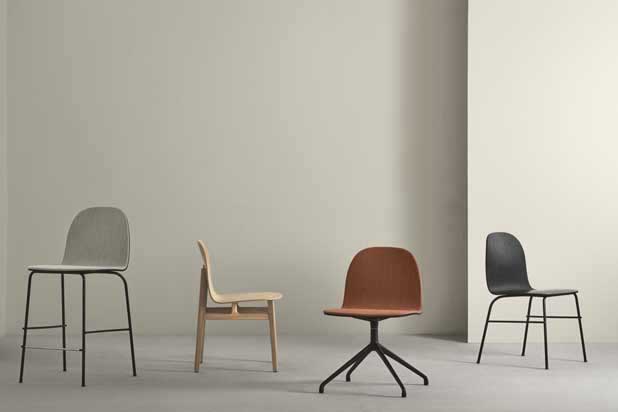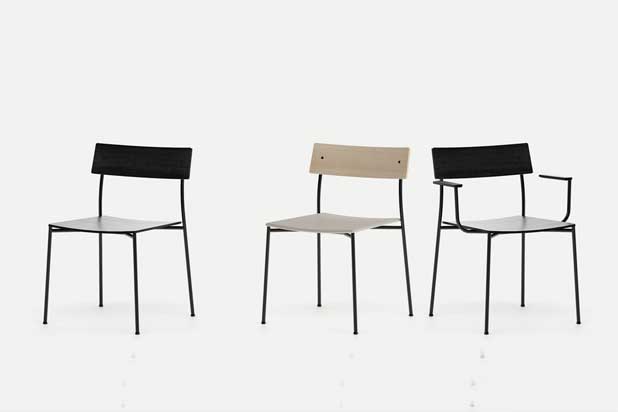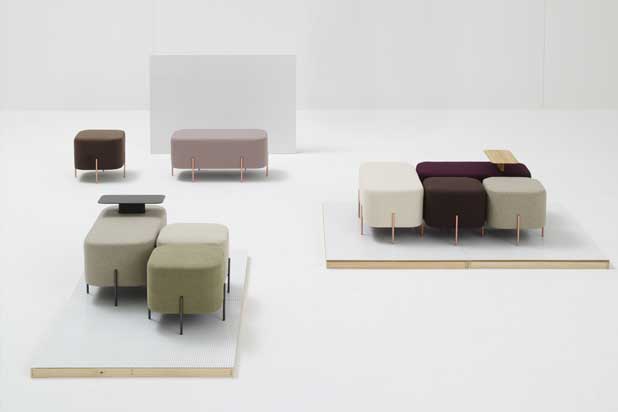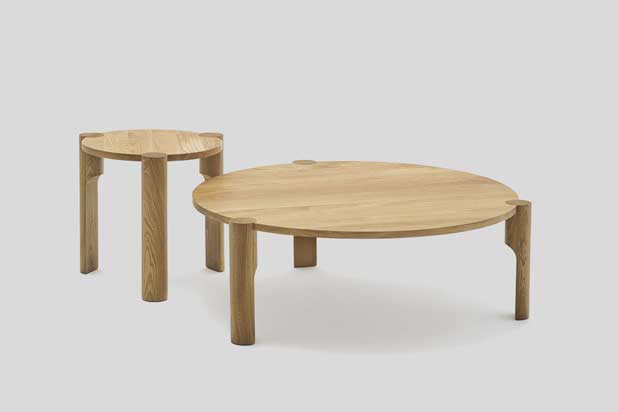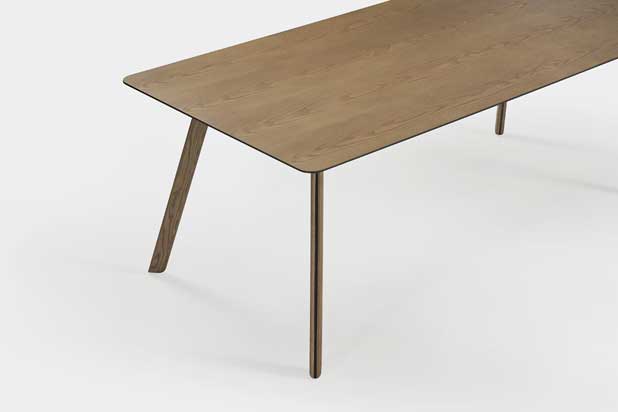Isaac Piñeiro is a Galician product designer based in Barcelona, one of the leading cities of Spanish design. After graduating from the Mestre Mateo Santiago Art School, Piñeiro moved to Valencia in 2002, where he studied product design at EASD. During 2007, he continued his education in Italy studying a Master of Design at the Polytechnic School of Design (SPD Scuola Politecnica di Design) of Milan, where he had the chance to learn from professionals like Odoardo Foiravanti, Huub Ubbens and Matali Crasset.
A year earlier, in 2006, he created, together with other designers, the multidisciplinary design studio Nadadora, which for more than ten years carried out fruitful work for well-known Spanish design firms such as Sancal. He also began a new professional venture in 2017 with the opening of his own product design studio, “Isaac Piñeiro Design Studio,” from where he creates intuitive products based on a search for efficiency in conception, production, and design.
His work has appeared in media, museums, and international shows, and has received prestigious awards such as the Best of the Year 2017 award for Interior Design Magazine for his Tortuga seating collection for Sancal, and in 2021 two IF Design Awards for the KNOSSOS table for Mobenia and the TOTANA lamp for Pottery Project and a "Red dot" for the FUJI lamp for Faro Barcelona.
Interiors from Spain: How did you become interested in this creative discipline? Do you remember your first design?
Isaac Piñeiro: Before focusing on furniture, I created functional and decorative objects on a smaller scale. A collection of ceramic plates designed and manufactured in Manises, a small town in Valencia where ceramic production was, and still is, very important, formed my final degree project. Then followed other projects and my first project published by a small publisher.
My interest in product design was somewhat coincidental. Having studied photography, I became interested in graphic design and moved to Valencia. After completing the first course, a professor recommended that I change to the product specialization, and so I began my studies in that field. In the process, I discovered all the aspects of product design, development, and communication, which I was passionate about from the very beginning.
Interiors from Spain: After beginning your training in Valencia, you completed your education at the "Polytechnic School of Design,” in Milan. What did you learn from the way Italian designers create?
Isaac Piñeiro: My education was enriched by the presence of first-class teachers and professionals. I learned a great deal and worked hard. There were numerous opportunities to meet very technological companies as well as more artisanal ones, such as the Murano glass workshops. The work intensity and project culture instilled in us was such that it is still part of the studio's DNA today, but this foundation has also been consolidated through work with Spanish companies during the studio's early years.
During my time in Milan I met great colleagues and designers such as Alessandro Stabile, a colleague at the "Scuola" with whom I was able to work on some projects. In addition to being a good friend, he is currently one of Italy's most promising designers.
Italy has historically been regarded as a benchmark, as have other European countries. Nevertheless, during these years, we have been able to witness how Spanish design has gained international recognition through Spanish designers and companies, and that is very encouraging. In the past few years, we have witnessed the development of local companies that have reached a high level and attracted the attention of international media and designers. We need to believe it a little bit more and not go looking for foreign companies, but rather support what we have, collaborate, and communicate it.
Interiors from Spain: In 2006 you co-founded the studio "Nadadora." What impact did that experience have on your design?
Isaac Piñeiro: Above all, we worked with different profiles, we offered a multidisciplinary perspective, and designed interiors, graphics, and products.
Interiors from Spain: In 2017 you create your own studio. In your product design, what values do you convey? On what concepts are you basing your decisions?
Isaac Piñeiro: In terms of production, comfort, aesthetics, and materials, I strive to make products that are consistent and efficient. While we are aware that we can produce as much as we desire, at the studio, we think that instead of producing more, we should produce better.
Each company has access to internal and external resources, which we must manage and utilize responsibly. Upon starting a new project, we recognize that each client and each scenario has its own particularities. Thus, as designers, it is our duty to respect, analyze, and improve these relationships in order to achieve a product that is compatible with those resources.
Interiors from Spain: Shapes are prominent in your designs. What inspires you to achieve them?
Isaac Piñeiro: Although I have never been able to explain the inspiration thing, I will endeavor to do so. Besides visual references or readings, it can also originate from a conversation with a craftsman, an industrialist, or even the client himself/herself. However, it is primarily obtained through hard work, analysis, and thorough research. During this phase, potential solutions begin to emerge. I think it's a matter of building and nurturing a base and then being able to combine ideas with needs.
My work involves an ongoing process of drawing, exploring forms and then working them on paper or models to analyze their potential. And, above all, proportions. In order for this combination of shapes, colors and materials to work, they should coexist and create a balance that conveys the idea of comfort, beauty, robustness or any other concept that we wish to convey to our audience.
Interiors from Spain: You work with wood, metal, ceramics and textiles. Which material most resonates with you? Are there any new ones you would like to try?
Isaac Piñeiro: The truth is that each project requires a choice of materials in order to achieve the best possible product quality. There is a revolution going on in terms of new materials, there are many references, and I believe we must be aware of how we utilize them in order to avoid harming the environment. Honext, a new material that is 100% circular, is something I have had the opportunity to learn about and I believe it may be an interesting option for a variety of applications.
Interiors from Spain: A Galician by birth, how do you see product design in an area of Spain like Galicia, which has produced many renowned fashion designers, but not so many product designers of the same caliber?
Isaac Piñeiro: As of now, Axencia Gain is performing a very important job of promoting and supporting design. The Didac Foundation also plays an important role in this regard. Recently, I was able to attend an exhibition on Galician design at the Barrié Foundation in A Coruña, in which I participated, and I was able to appreciate the excellent condition of Galician design, partly made in Galicia and partly abroad. Possibly there are not many examples in the interior design sector, but those that do exist are very strong, for instance, the historic Sargadelos, the Finsa group or A Emotional Light, formerly A by Arturo Álvarez. Additionally, there are very good examples of design in other sectors, such as in the maritime, food, and technology industries, so I believe there is an exciting and encouraging scenario that will yield very good results in the future, in addition to the ones that have already been achieved.
Interiors from Spain: Tell us about your work outside of Spain, such as presenting your collections or speaking at design conferences.
Isaac Piñeiro: The studio undertakes this work on a regular basis, and I am happy to assist whenever possible. My clients have an international presence and in order to promote their products, I participate in conferences organized by cultural institutions or international shows. Having the opportunity to observe other cultures and to learn about other scenarios is very enriching, especially when it comes to seeing how your products are perceived in other countries and if you are able to convey the values that gave rise to the project.
In today's world, with the advent of the Internet, one can reach anywhere, and the pandemic has consolidated this form of communication, however I still believe that direct contact, face-to-face talking, the exchange and seeing the products in situ have value, perhaps less easy to implement but more substantial.
Interiors from Spain: By the way, your FUJI lamp for Faro Barcelona won two IF Design Awards and a "Red Dot" this year. Congratulations!!! What do you value about these international recognitions?
Isaac Piñeiro: Recognition is always appreciated, so I am very happy. Moreover, with companies that, although they are in the same sector, are very different. From a product with a high degree of craftsmanship as Totana, to a purely industrial one as in the case of the Fuji lamp. The quality and warmth they transmit from different perspectives are, in my opinion, on the same level at the end of the day.
This recognition is a good support for the diffusion of the brand and its products. Hopefully, this will allow companies to consolidate and enhance their current product portfolio.
Interiors from Spain: What projects are you working on at the moment? Anything outside of Spain?
Isaac Piñeiro: With multiple projects at the same time, as always, if I recall correctly, we currently have more than 20 projects in the pipeline.
Currently I continue in the line of work that I have been doing so far, with product design and development, some of them outside Spain. Furthermore, I am developing a project with which I am very excited, consulting and creative direction for a new client, and hopefully next year we can see some results.












